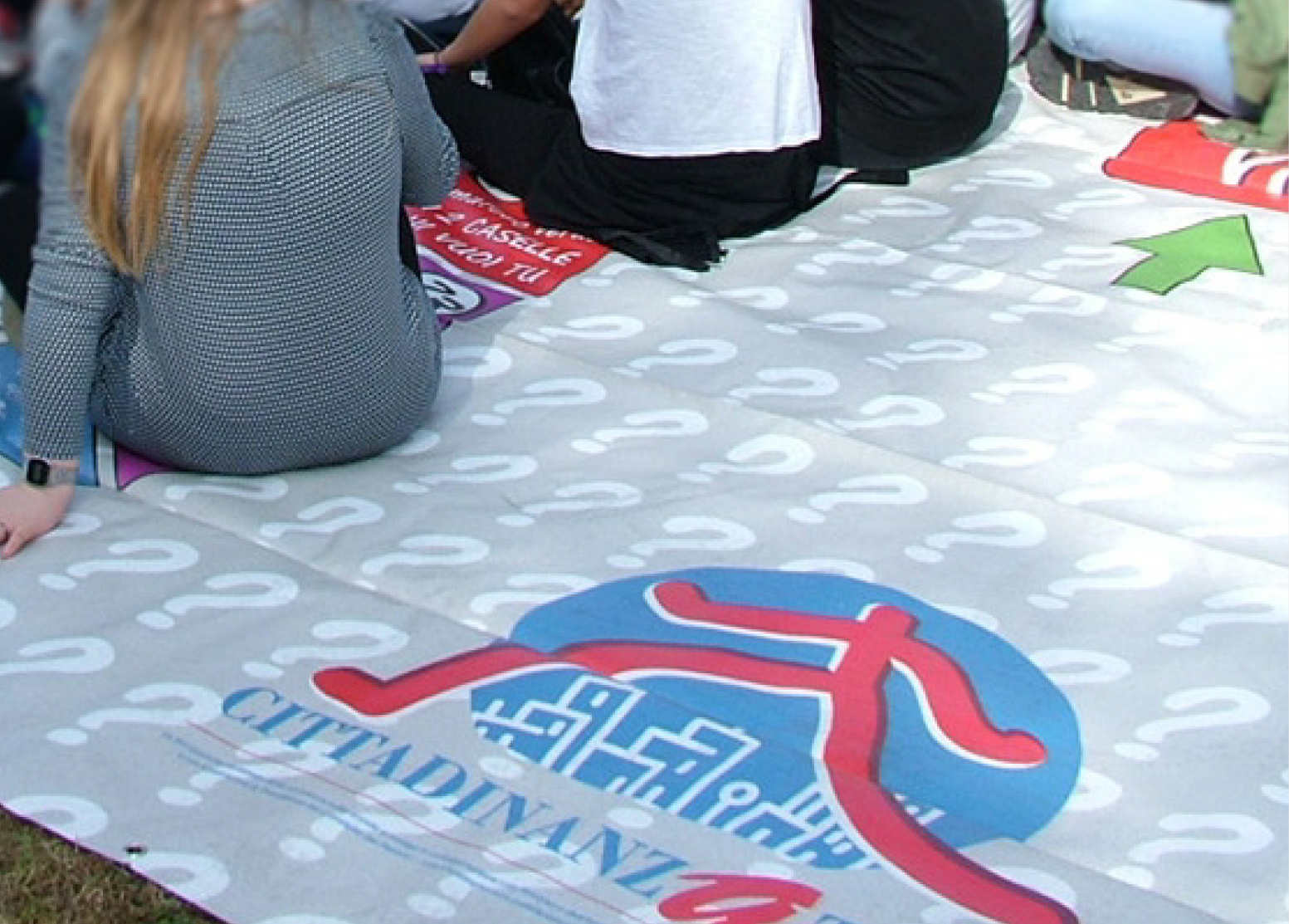In Italy, the waste management less works and the more you pay, and the rates are out of control: in the last 5 years costs doubled in Salerno and Reggio Calabria. Record increases in Naples (+87%), Bari (+63%), Trapani (+55%), Rome (+53%) and Avellino (+51%).
In the last year double-digit increases in Bari (+30%) and other 7 cities
From Tarsu to Tares through Tia, in Italy waste management does not change and rates are out of control: in the last 5 years, costs have almost doubled in Salerno (+98%) and Reggio Calabria (+96%). Record increases also in Naples (+87%), Bari (+63,5%), Trapani (+55%), Rome(+53%), Avellino (+51%).
Waiting to know the actual weight for the citizens of the unknown Tares, last death throus of Tarsu and Tia – who "greeted" with an increase of 2.8% compared to the previous year – do not indifferently pass. Record in Bari (in 2012 Tarsu has increased by 30% compared to 2011), followed by Messina (Tarsu: +22%) and Firenze (Tia: + 21%).
Waste weight in gold: in Naples, annual expenditure for the disposal of municipal solid waste amounts to €529, a national record, more than four times the least expensive city in Italy, Isernia (122€). Among the 10 provicial capitals with the highest tariffs, only three are in the South: Rome (378€), Carrara and Venice (346€).
In general, the highest annual average is recorded in Campania (389€), the lowest in Molise (154€), demonstrating a marked difference between geographic areas of the country that is also confirmed in the same region: in Lombardy, for example, in Milan (299€) Tarsu can cost almost twice Tia paid in Brescia (146€). The same is true in Sicily, where Tarsu paid in Siracusa (407€) exceeds the 189€ Tarsu paid in Palermo, or in Tuscany, where Tia paid in Livorno (304€) exceed 90€ Tia paid in Florence (214€). And yet, in Campania, Tarsu in Avellino is 274€ lower that the one paid in Naples, while in Calabria Tarsu paid in Crotone is 109€ higher than that one paid in Vibo Valentia (176€).
Wherever you go to Italy, different wastes you find: South produces less waste but it costs more: on average, to pay the bill of waste you spend more in the Southern regions (€270), where the increase over 2011 was 2,3% (+27% compared to 2007); followed by the central regions (€255), +1,2% compared to 2011 (+15% compared to 2007) and North Italy (234€) with a +2,6% compared to 2011 (+15% compared to 2007).
On the other hand, the center records the highest average in terms of per capita production of waste: (613 kg), followed by North (533kg) and South (495 kg).
The virtuosos of the collection, however, are the North regions, far ahead (49%, broadly in line with state law) compared to the Center (27%) and the South (21%).
In the study made by Observatory prices & rates of Cittadinanzattiva, the analysis of a national service for the disposal of municipal solid waste in terms of cost borne by a typical family of three people with total gross income of €44,200 and a house of 100 square meters.
The survey covered all provincial capitals (with the exception of Pesaro) in 2012, and it is available online at www.cittadinanzattiva.it.
Bills. On average, during a year our family-type claimed in 2012 at a cost of 253€ for the service for the disposal of municipal solid waste, with an increase of 2,8% compared to the previous year. In addition, from 2007 to 2011 the increase was on average 17,1%.
Compared with a year ago, there are eight cities that have experienced double-digit increases: in addition to Bari (+30%), Messina (+22%) and Florence (+21%), significant increases were also recorded to Novara (+19%), Avellino (16%), Trapani (15%), Milan (14%) and Catanzaro (10%).
|
The most expensive 10 cities |
The cheapest 10 cities |
||
|
Naples |
€ 529 |
Isernia |
€ 122 |
|
Salerno |
€ 421 |
Matera |
€ 135 |
|
Syracuse |
€ 407 |
Brescia |
€ 146 |
|
Catania |
€ 396 |
Pordenone |
€ 153 |
|
Caserta |
€ 393 |
Udine |
€ 159 |
|
Rome |
€ 378 |
Cremona |
€ 160 |
|
Agrigento |
€ 358 |
Viterbo |
€ 160 |
|
Venice |
€ 346 |
Ascoli Piceno |
€ 174 |
|
Benevento |
€ 346 |
Como |
€ 176 |
|
Carrara |
€ 346 |
Vibo Valentia - Verona |
€ 176 |
Source: Cittadinanzattiva – Observatory prices&rates, 2013
|
Region |
Average amount year 2012 |
Average amount year 2011 |
Average amount year 2007 |
Change average amount |
Change average amount |
Production of municipale aste per capita (Kg) 2010 and change from 2009* |
|
Abruzzo |
€ 211 |
€ 217,5 |
€ 196 |
-3,0% |
+7,7% |
507 (-1,4%) |
|
Basilicata |
€ 194 |
€ 191 |
€ 172 |
+1,6% |
+12,8% |
377 (-1,3%) |
|
Calabria |
€ 208 |
€ 204 |
€ 170,5 |
+2,0% |
+22% |
468 (-0,4%) |
|
Campania |
€ 389 |
€ 378 |
€ 262 |
+2,9% |
+48,5% |
478 (+2,4%) |
|
Emilia R. |
€ 248 |
€ 242 |
€ 213 |
+2,5% |
+16,4% |
677 (+1,7%) |
|
Friuli V.G. |
€ 227 |
€ 229 |
€ 214 |
-0,9% |
+6,1% |
494 (+3,1%) |
|
Lazio |
€ 251 |
€ 262 |
€ 224,5 |
-4,2% |
+11,8% |
599 (+2,0%) |
|
Liguria |
€ 256 |
€ 252 |
€ 211 |
+1,6% |
+21,3% |
613 (+1,3%) |
|
Lombardy |
€ 210 |
€ 202 |
€ 184 |
+4,0% |
+14,1% |
500 (-0,2%) |
|
Marche |
€ 191 |
€ 195 |
€ 171 |
-2,1% |
+11,7% |
535 (-0,4%) |
|
Molise |
€ 154 |
€ 146,5 |
€ 125,5 |
+5,1% |
+22,7% |
413 (-3,1%) |
|
Piedmont |
€ 259 |
€ 252 |
€ 222 |
+2,8% |
+16,7% |
505 (0,0%) |
|
Puglia |
€ 284 |
€ 269 |
€ 249 |
+5,6% |
+14,1% |
525 (-0,4%) |
|
Sardinia |
€ 263 |
€ 263 |
€ 255 |
+0,0 % |
+3,1% |
492 (-1,8%) |
|
Sicily |
€ 303 |
€ 294 |
€ 274 |
+3,1% |
+10,6% |
517 (+0,2%) |
|
Tuscany |
€ 276 |
€ 271 |
€ 240 |
+1,8% |
15% |
670 (+1,1%) |
|
Trentino |
€ 199 |
€ 196,5 |
€ 175,5 |
+1,3% |
+13,4% |
491 (-2,0%) |
|
Umbria |
€ 279 |
€ 265,5 |
€ 223,5 |
+5,1% |
+24,8% |
597 (+1,2%) |
|
Valle d’Aosta |
€ 230 |
€ 230 |
€ 205 |
+0,0% |
+12,2% |
623 (+0,3%) |
|
Veneto |
€ 222 |
€ 223 |
€ 201 |
-0,4% |
+10,4% |
488 (+1,0%) |
|
Italy |
€ 253 |
€ 246 |
€ 216 |
+2,8% |
+17,1% |
536 (+1,1%) |
Source: Cittadinanzattiva – Observatory prices&rates, 2013 *Fonte: Ispra, 2012
Europe calls, Italy reply: according to Eurostat data, in Italy only 34% of municipal waste is recovered, compared to the European average of 40%; there are only two countries of "old Europe" after us: Portugal (19%) and Greece (18%). Half of the waste ends up in landfills, 15 million tons per year, while in Europe 38% of the average waste is landfilled.
Countries that appear to be more virtuous are Austria, Germany, Belgium and the Netherlands that recover from municipal waste, respectively, 69, 62 and 61% of the raw material, with an almost non-existent landfill
Not to recycle adequately represents not only environmental costs, loss of competitiveness and increased operating costs, but also the risk of fines paid by the European Union Member States fo failure to comply with the legislation landfills (Directive 1999/31/EC) and Italy has unfortunately sad primate in the number of infringement proceedings.











